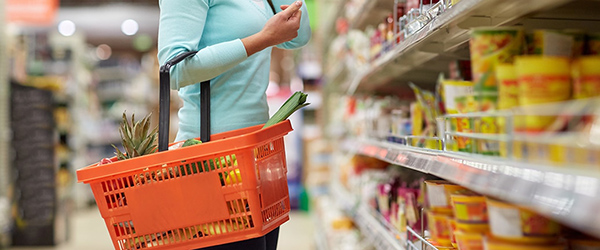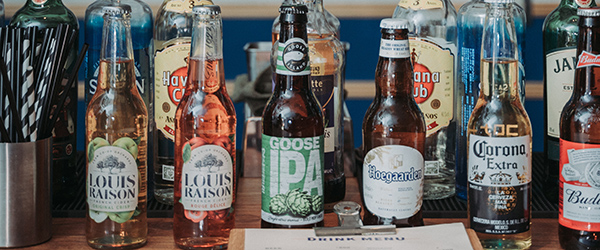December 16, 2020 Opinion piece
2020 is a year that has seen a lot of change – and the retail industry has been one the hardest hit. But despite all the gloomy headlines about high-street closures and job losses, the retail industry has shown that through collaboration, the future can still look bright.
If you look up the word ‘resilience’ in the dictionary, you will find the following definition: "The ability of a system or organisation to respond or recover readily from a crisis.”
And that is certainly what the grocery industry has had to show in the last nine months.
But in what ways have they done this and at what cost?
As much as we would love to replace the word resilience in the title with the word jolly, anyone working in the grocery sector knows this time of year is challenging at the best of times. And it’s certainly not like a scene from a festive film.
It is a pressurised environment, with retailers and brands vying for the shopper’s attention, whilst trying to give them a great experience and good value for money. The Christmas trading period goes hand-in-hand with ensuring stock levels are kept high, demand forecasting is accurate, and profits are made.
For the shopper, it is all about stocking our fridges and cupboards with the tastiest fizz, the most delicious turkey and the biggest box of chocolates we can find.
This year, however, is quite a different story.
With COVID-19 still very much with us, retailers and brands are having to turn up a notch the resilience they have already shown over the last nine months. We are seeing them demonstrate more agility than ever before, trying to strike the right balance between supply chain efficiency and flexibility, and all the time changing their once-a-year scenario planning mindsets.
When opening the latest customer email from Simon Roberts, chief executive at Sainsbury’s, last week, it got me thinking about the last few months and the way that the grocery industry has had to drastically change throughout this global pandemic. Simon talked about:
- Changes that have been implemented to keep the shopper safe
- How altering your shopping habits can help other shoppers
- How they are going to reward shoppers for making those changes
These are just three in a long list of considerations that have arisen since COVID-19 hit back in March, for now and for the future.

Managing supply and demand concurrently
Since March, the grocery supply-chain has been pushed to its limit − responding to changes in consumer habits as well as an ever-changing COVID-19 environment.
No sector has experienced this more than the Beers, Wines and Spirit (BWS) sector. With a high percentage of brands in this sector sharing their business 50/50 between on-trade and off-trade (i.e., pubs or restaurants vs. retail outlets), the volatile COVID-19 environment has forced them to drastically change the way they work.
With pubs having limited opening hours and less people socialising outside of their households, on-trade has at times been at a complete stand still. Off-trade is the total opposite, with alcohol sales in the supermarkets going through the roof and surpassing previous records.
As a result of this shift from on to off-trade, there has been a complete demand structure change for a lot of BWS brands. One of the main changes being around the packaging types brands are using.
For beer and cider brands, a big part of their business used to go out in kegs to pubs and restaurants across the country. For the majority, this has now switched to 100 per cent cans and bottles. Throw in the global glass shortage, and managing supply and demand simultaneously continues to be challenging for these brands.
On top of that, there is a human impact. Some BWS brands have had to introduce 24/7 working patterns, with teams working in three shifts throughout the day to keep up with consumer demand. Staff have had to adapt to new ways of working, which has been mentally challenging on top of the physical challenges of a lack of warehousing space.

Ensuring business continuity and scenario planning
In a recent GS1 UK webinar on ”How to build retail resilience in light of a global pandemic” GS1 UK chair, Chris Tyas, talked about how business continuity planning has become a daily way of life since the outbreak of the COVID-19 pandemic.
Many grocery retailers and brands have had to adapt overnight – changing, and in some cases creating, new ways of working to suit the current climate.
Recently I was speaking to one of our grocery members about how they had to adapt during the pandemic. They told me that their whole way of working, particularly in supply-chain has drastically altered. And, despite seeing themselves as a forward-thinking business, the consistent changes in direction and the daily ”what ifs” have been difficult to manoeuvre.
An example they gave was around one of their major grocery customers. They had three record months of sales with the grocer, which made them assume this was going to be the case for the rest of their retailers. But it wasn’t. For many they had months of slowed sales, something they just couldn’t and didn’t predict.
The days of relying on previous months sales and predictable consumer habits are long gone. Scenario planning now plays a major part in any successful company’s crisis playbook.
As does cross-industry collaboration. The likes of which have not been seen before the outbreak of COVID-19, with more than 150 brands and retailers coming together as part of DEFRA’s Food Resilience Industry Forum to ensure supply-chains were able to keep up with demand.
By having an end-to-end view of the entire supply-chain, the retail industry as a whole has been able to resolve collective challenges. Moreover, the use of GS1 standards has enabled everyone to use a common language to track-and-trace goods and pinpoint areas of weakness before problems occur.
What does a post COVID-19 trading environment look like?
Whilst today it is very hard to see a world post COVID-19, retailers and brands are already talking about what a post COVID-19 trading environment will look like for them.
What is their role? What is the role of their category? How can they call upon others to help them meet these challenges?
After attending our recent retail resilience webinar, Christopher Milton, off-trade and export sales director at Thatchers, shared his reflections on the challenges ahead:
We live in a trading environment that is volatile, uncertain and complex, meaning we are working with ambiguity. Whether its Brexit or COVID-19, and there will be other challenges in the future, these challenges create change and opportunity for all.
The webinar informed and reaffirmed that view of a volatile, complex, uncertain and ambiguous world. It also allowed an opportunity for reflection on other views before we step back into the reality of how to manage those resultant issues within our own businesses.”
Despite living in an increasingly uncertain and volatile world, collaboration has never been more key. We’ve already seen how working harmoniously has accelerated retail advancement by years, in only a few short months.
As a neutral industry body, GS1 UK is here to support that collaboration and facilitate industry discussion to find a collective solution to a common problem.